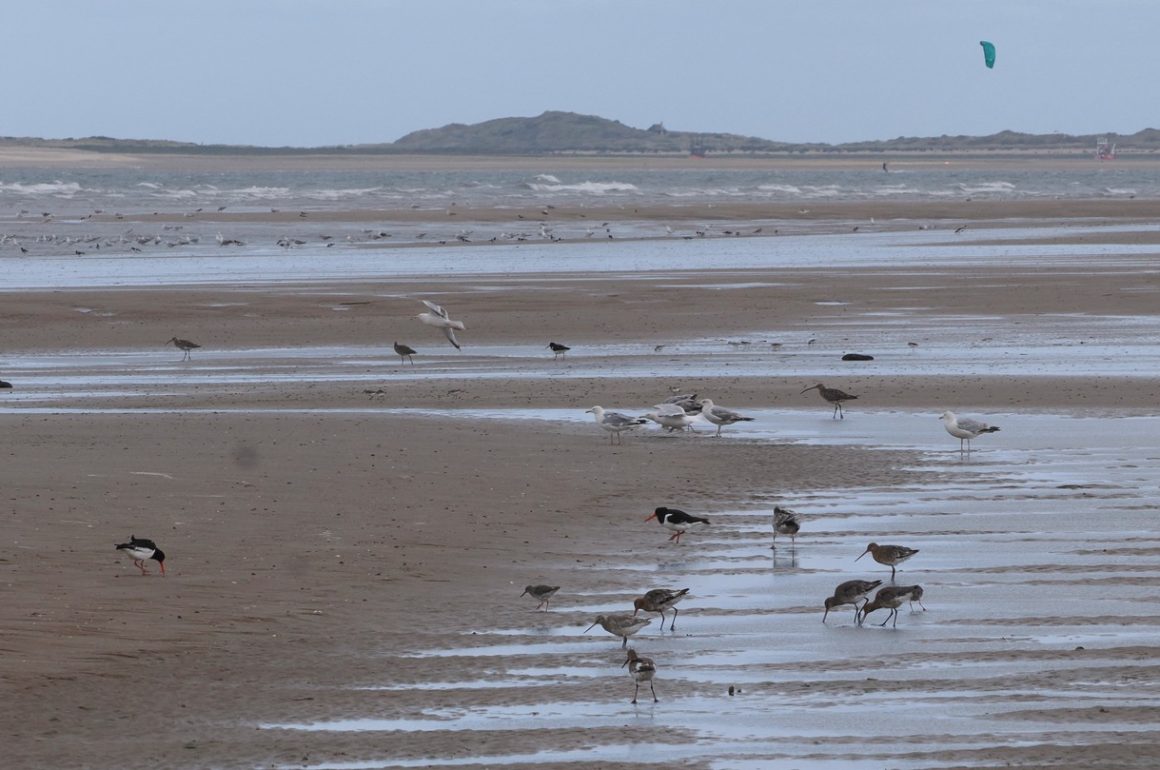
Traditionally, the hot and humid period in late July and early August is know here as the dog days of summer. It’s not a great time to see birds, most of which are now moulting and doing their best to keep out of sight. However, it is one of the best periods of the year to see Arctic-nesting waders, which are now pouring south in their thousands. Here in East Anglia there’s no finer place to see them than the Wash, a huge tidal bay, made up of many small estuaries. Its extensive mud flats are a vitally important feeding ground for huge numbers of migrant birds.
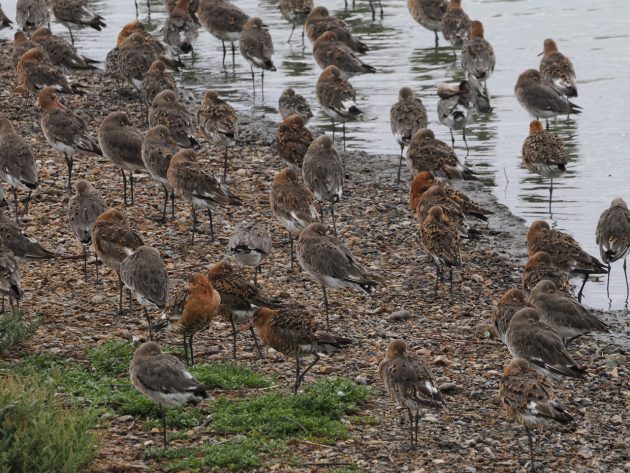
Roosting Black-tailed Godwits, some still showing their orange breeding plumage. These birds will have bred in Iceland, and are of the race islandica
Because of its size, the Wash is a difficult area to work, but there are a few places where you can be sure to see a lot of birds. Arguably the best of them all is Snettisham, on the Norfolk coast. Here the RSPB has a reserve based on old flooded gravel pits, and on the biggest tides, when the whole of the Wash is flooded, these attract impressive flocks of waders.
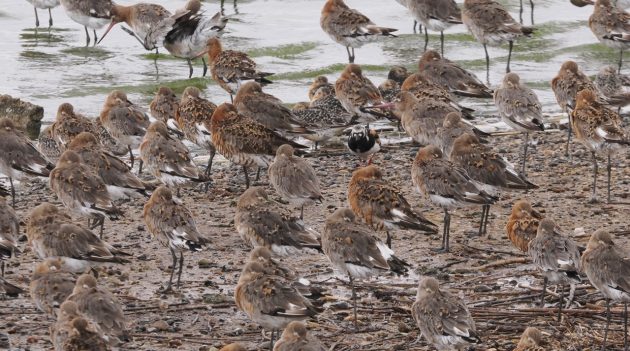
Black-tailed Godwits, but look carefully and you will also see a single Turnstone and several Knots
My birding friend Andrew and I visited Snettisham on 1 August: there was a moderately high tide at a good time (close to midday). The very best tides for seeing birds are usually at inconvenient times, so this was a compromise. What we hadn’t really allowed for was rain, for this has been one of the driest of summers here in East Anglia. It’s a long walk from the car park to the hides on the RSPB reserve, and it rained steadily throughout our walk. I’d left my waterproof jacket at home, so by the time we reached the first hide I was both wet and cold.
However, there were sufficient birds to cheer me up. Out on the Wash itself were swirling flocks of waders, pushed off the mud by the incoming tide. A distant flock of Knots rose and fell over the water, looking much like a murmuration of Starlings. There was a flock of Oystercatchers that was probably a couple of thousand strong, while there were small waders everywhere we looked – mainly Dunlins, together with Redshanks, Sanderlings and Ringed Plovers.
Several thousand Black-tailed Godwits had already crowded into one of the gravel pits. They were tightly packed together, making counting them difficult, but a modest estimate suggested 3,000 birds, possibly many more. Most were making the most of the high tide to sleep, so the great majority had their long beaks tucked firmly under their wings. There was a mixture of juvenile and adult birds, and a fair proportion of the latter were still in their lovely orange summer plumage. Mixed in with them, and surprisingly difficult to pick out, were a number of Knot.
Knot are high-arctic nesters. The first nest was found on the New Siberian Islands, high in the Arctic Ocean, in 1886. Circumpolar nesters, they are one of the most northerly breeding of all the waders. Their one breeding site in Europe is on Svalbard, where there are only a few pairs, so the great flocks we see here are almost all migrants from Siberia. Incidentally, this is of course the same bird as the Red Knot that occurs in North America. The adjective red isn’t really necessary, as there are no yellow or blue knots, and here in the UK we are most used to seeing them in their dove-grey winter plumage. There were a number of birds at Snettisham that still retained much of their lovely breeding plumage: look carefully and you will see them in my photograph.
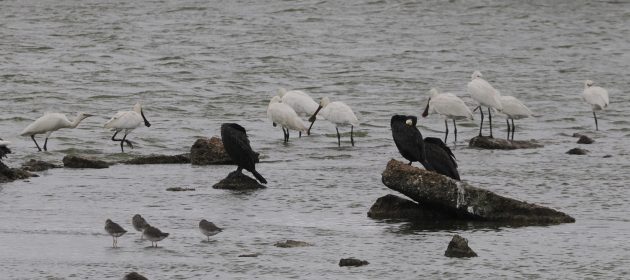
Resting Spoonbills, with Cormorants and Redshanks
It wasn’t just the waders that entertained us, as there was also the biggest flock of Spoonbills that I’ve ever seen in Norfolk – our best count was 44 birds. These birds have been nesting in Norfolk since 2010, and number are increasing every year. Spoonbills like nothing more than sleeping, which was what most of this flock was doing. Rather more active were the Common Terns, some of which were still feeding young.
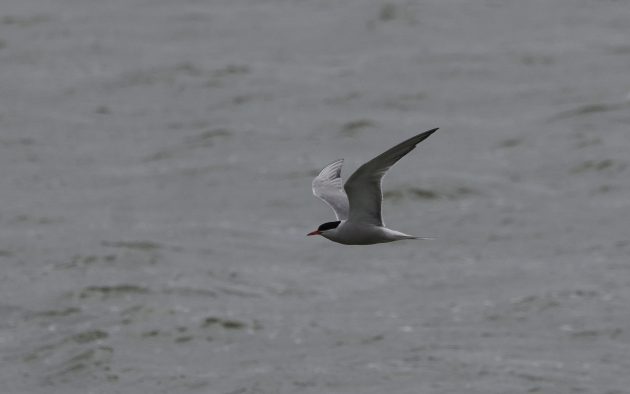
Common Tern
One bird we were looking for and did eventually see was a Pectoral Sandpiper. On this side of the Atlantic these sandpipers are rare but regular visitors, and this was the first individual I’d seen for many years. It was, alas, far out of camera range. So, too, were the pair of Little Stints that I found with my scope out on the mud of the Wash. The sandpiper and the stints were respectively my 195th and 196th species of the year in the UK.
As the tide started to recede, something it does with remarkable speed, so we trudged back on the shingle to the car park. Our next destination was another RSPB reserve, Titchwell, and here we were delighted to see a small flock of Curlew Sandpipers. These are also birds that breed in the high Arctic – none nest in Europe. They are scarce spring and autumn migrants in East Anglia, so always a good bird to see, and my 197th species.
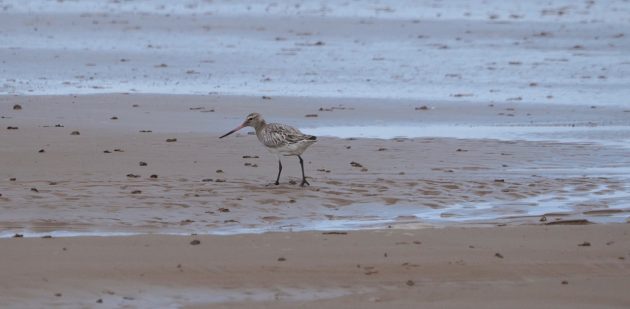
Bar-tailed Godwit: note the short legs compared to Black-tailed Godwit
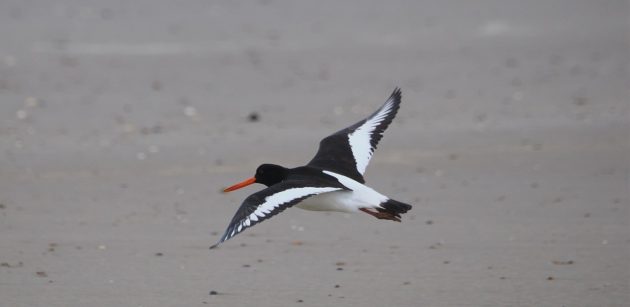
Oystercatcher
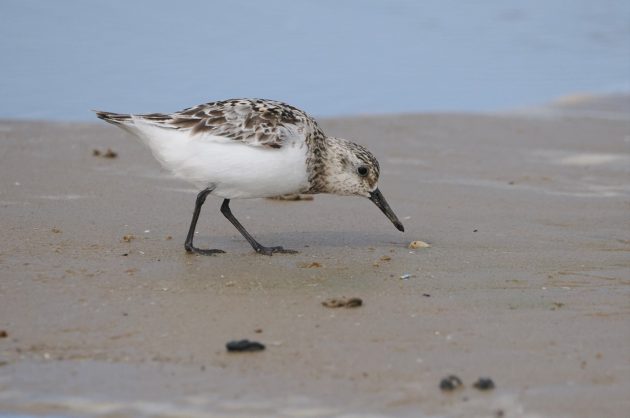
Adult Sanderling, moulting out of summer plumage. In winter they are much plainer, and mainly pale grey above
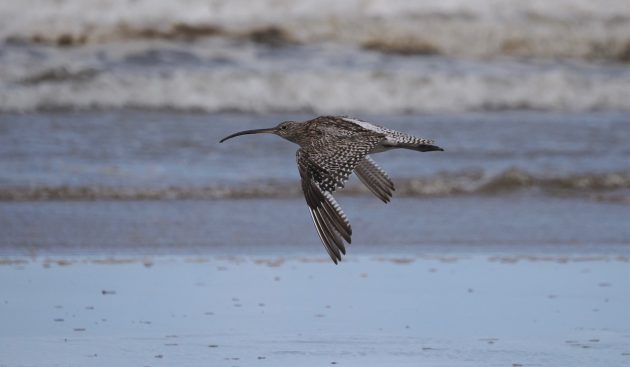
Curlew in heavy wing moult (above) and feeding (below)
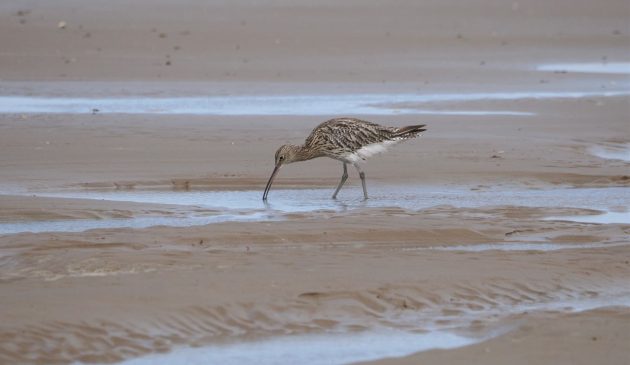
now the rain had cleared away into the North Sea, so we enjoyed a walk along the beach, where we were able to admire a further selection of waders. We found, at last, a Bar-tailed Godwit, as well as Oystercatchers, Curlews and several approachable Sanderlings. There was a small variety of gulls, too: Black-headed (fast losing their brown heads), Herring, Great Black-backed and Common, or what are known as Mew Gulls in America. They are never common in England: the name reflects the fact that they nest on commons in Scotland.
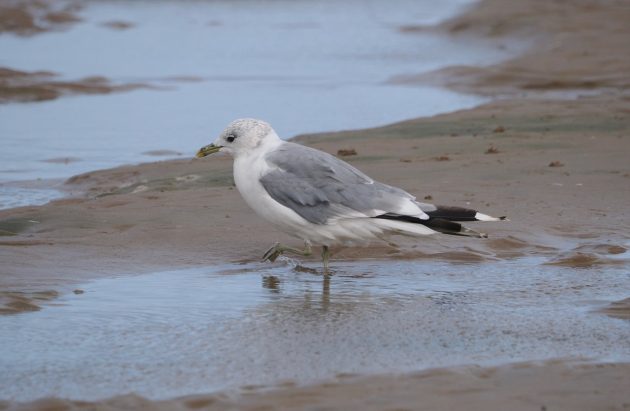
Common gull, or what Americans call a Mew Gull. Note the dark eye
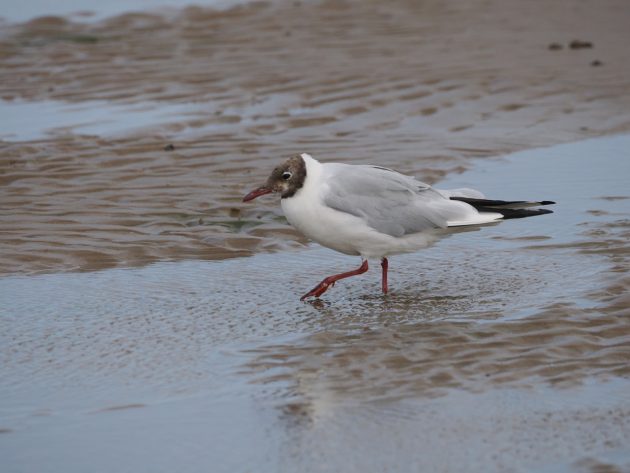
Black-headed Gull, starting to lose its brown head
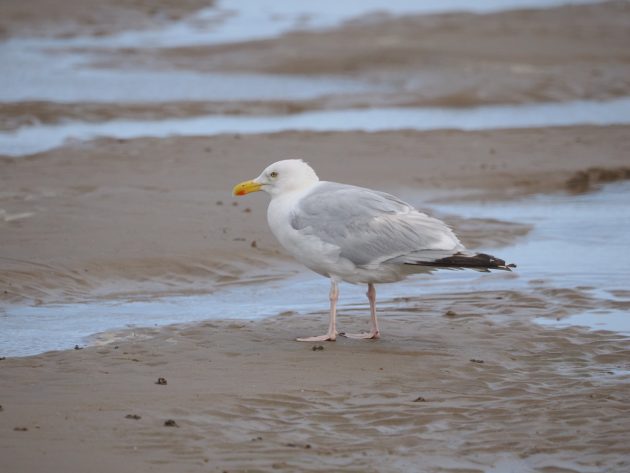
Herring Gull
As we walked back to the car after a day in which we had seen many thousands of shore birds, a small party of Golden Plovers flew over, our 21st species of wader, and a fitting conclusion to a great day out, despite the weather. My rather dull photographs are a reminder of a grey but memorable day.


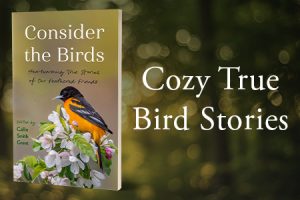





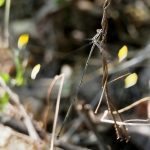
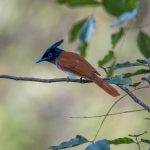
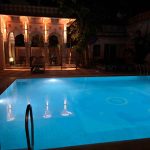
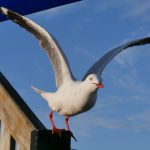
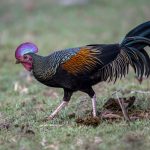
…I’d left my waterproof jacket at home… guaranteed to get soaked according to Murphy’s Law! Waders in late summer is one of two things that make August bearable, the other one being a cold beer on the beach. The knots are great, but the curlews and godwits are the best for me – there are so many fond memories associated with their calls, during our summer holidays in Zeeland. Splendid post again.
I much enjoy your posts, but…., with apologies for being pedantic, the North American Mew Gull was renamed by the powers-that-be a couple of years ago; it’s now the Short-Billed Gull.
I have this on my to to list, David. I’ll be in touch